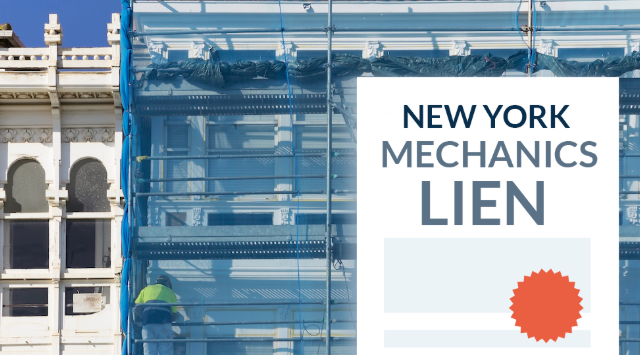Mechanics Lien NY: Key Facts Every Contractor Must Know

In the construction industry, timely payment is essential. When contractors, subcontractors, or suppliers aren’t paid for the labor or materials they provide, legal tools are available to help them secure compensation. One of the most powerful of these tools is the mechanics lien NY law. This legal right allows certain parties to place a claim against a property to ensure payment for work performed or materials delivered.
What Is a Mechanics Lien?
A mechanics lien is a legal claim filed against a property by a contractor, subcontractor, or supplier who has not received payment for services or materials related to a construction project. In New York, this lien gives the unpaid party a legal interest in the property, effectively preventing its sale or refinancing until the debt is resolved.
Who Can File a Mechanics Lien in NY?
New York law allows various parties involved in the construction or improvement of real property to file a lien. These include:
- General contractors
- Subcontractors
- Laborers
- Material suppliers
- Equipment lessors
- Architects and engineers (in some cases)
It’s important that the claimant has a direct connection to the improvement of the property. For example, if a supplier delivers materials to a subcontractor on a project site, that supplier may have lien rights. However, suppliers typically do not.
Content and Accuracy Are Crucial
New York requires that a mechanics lien include very specific information:
- Names of the parties involved
- Amount claimed
- Property description
- First and last dates of work
- Type of labor or materials supplied
Errors or omissions can invalidate the lien. For this reason, accuracy is non-negotiable. Minor mistakes, such as a misspelled name or incorrect property address, can result in the dismissal of the claim.
What Happens After Filing?
Once a lien is filed, it remains valid for 1 year from the date of filing. During this period, the claimant must enforce the lien by initiating a foreclosure action in court. If no action is taken within this time frame, the lien automatically expires.
However, before filing a lawsuit, many parties attempt to resolve the matter informally. The lien’s presence on a property title often encourages property owners, lenders, or developers to settle the dispute to avoid legal delays or financial complications.
Common Mistakes to Avoid
Understanding the rights and limits of a mechanics lien NY claim is not enough—contractors and subcontractors must also avoid these common missteps:
- Missing deadlines: Filing late can eliminate your right to claim.
- Inadequate documentation: Keep records of contracts, change orders, invoices, and correspondence.
- Failing to serve notice: The property owner must be properly notified.
- Incorrect information: Precision matters. Verify all legal descriptions and names.
- Not enforcing the lien: A lien must be acted upon before it expires.
Avoiding these errors requires preparation and attention to detail at every stage of the project, not just when problems arise.
Benefits of Using a Mechanics Lien
Filing a lien is often more effective than sending repeated payment requests. It places a direct financial burden on the property, making it difficult for the owner to ignore the debt. A lien increases leverage and often prompts faster settlements. It’s also cost-effective compared to litigation. Filing a lien costs far less than a lawsuit and may achieve results more quickly. While it doesn’t guarantee payment, it significantly improves the odds.
A mechanics lien is a powerful legal tool that helps contractors, subcontractors, and suppliers secure payment for work or materials provided on a construction project. One of the main benefits is that it gives you a legal claim against the property, increasing your chances of getting paid—even if the general contractor or property owner delays or refuses payment.
Filing a mechanics lien can also encourage faster resolution, as property owners often prefer to clear liens to avoid complications with selling or refinancing the property. It adds legal pressure without requiring immediate court action.
Additionally, mechanics liens protect your financial interests by establishing a public record of the debt. This visibility may motivate the property owner to settle the outstanding balance promptly.
Overall, using a mechanics lien helps protect your labor and investment, giving you leverage to recover unpaid dues in a fair and effective way.
Conclusion
For those working in construction, especially subcontractors and suppliers, the ability to secure payment is vital. The mechanics lien NY process gives unpaid parties a legal avenue to protect their work and seek fair compensation. By understanding the timelines, rules, and proper procedures, contractors can use this legal tool effectively without jeopardizing their rights. With proper planning and precise action, the lien process becomes a key asset in protecting financial interests in New York’s competitive construction environment.




